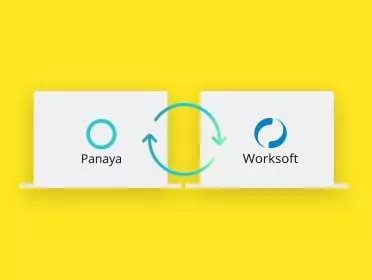Eissmann
Eissmann Cut EHP/HANA Project
Testing Time by 50%
About
Eissmann Group Automotive
Founded in 1964, Eissmann Group Automotive acts as a partner in the development and value adding process in the automotive industry. Operating out of 14 locations worldwide, the company’s 2016 turnover reached 472 million Euros.
The Challenge
Eissmann’s decision – both vendor and business-driven – to upgrade to SAP HANA DB and ERP 6.0 EHP7 in one go, was faced with multiple challenges. Key drivers were a competitive database migration offer from SAP and the need to accelerate BI system and transaction performance.
At Eissmann, SAP is implemented in a Waterfall model. Users include headquarters, production plants and worldwide locations. For every new go-live (functional enhancements and vendor-driven alike), carefully planned regression testing is executed to avoid any halts in production. Eissmann is known for their high-quality standards, which they apply to both their products and SAP landscape.
Eissmann’s business volume is over 100 million Euro per annum. The system must be up and running 24/7 and deliver just-in-time across all time zones. Any system interruption would potentially put delivery and production on hold, causing penalties by automotive customers. Thus, the project’s aim was zero defects in relation to the HANA database migration and upgrade.
The Solution
Eissmann required a thorough pre-testing impact analysis. “If you don’t test properly, unimaginable things can happen,” says Martin Spiegler, Project Manager at Eissmann, recalling a glitch in the system associated with a former upgrade to EHP 5, whereby inventory via their SAP system had shown up as multiplied. The decision to avoid recurrence of similar issues was one of the key drivers for deploying Panaya Test Dynamix.
Panaya Test Dynamix has enabled better scoping and prioritization at the planning phase. Rather than using manual test scripts and prioritization heuristics (e.g., production and logistics come first, finance later), Mr. Spiegler was now able to rely on hard data and system recommendations.
The Eissmann team found Panaya Test Dynamix surprisingly easy to handle, offering reusability and other built-in synergy features such as automated test documentation. “We were impressed at how Panaya Test Dynamix does system assessments. We realized we can analyze the subsystems and the interfaces, and provide changes analytics and recommended corrections,” says Mr. Spiegler.
The Results
Planning
System analysis took only half a day to complete. Mr. Spiegler and his team got full visibility into the upcoming project – with little or no setup effort on their side. Mr. Spiegler admits that business processes and landscape at Eissmann are quite complex. “Panaya helped us a lot to map all RFC connections and interfaces, archiving system and MIS systems. We got a good overview of system interfaces and valuable information on which transactions are used, how often and the significance of those transactions.“ explained Mr. Spiegler. “SAP standard tools do not provide that kind of holistic view Panaya Test Dynamix does,“ he adds.
Panaya Test Dynamix provided Eissmann with a predefined set of transactions (unit tests) to be tested. Correction tasks were also provided by the platform, so that the development team could apply change settings based on the automated simulation of the EHP upgrade and HANA migration. Additionally, the team employed Panaya Test Dynamix usage analysis to define the priorities of process testing.
Using Panaya’s proprietary technology, Omega™, critical processes were recorded during production by Panaya Test Center and converted into regression test scripts. All test cycles were executed using Panaya Test Dynamix.
Execution
“Without compromising on quality we were able to execute the same volume of test scripts, while saving 50% of the time for regression testing, reducing the geographically dispersed regression test cycle from 4 days to 2 days, thanks to recorded test scenarios,“ says Mr. Spiegler. “Our SAP Basis admin saved a lot of time during code fixing because he had code change ecommendations, which he copied and pasted into the development system. This phase would usually have taken two weeks and is now reduced to one week.” He adds.
Monitoring & Documentation
Progress monitoring is made easy with Panaya Test Dynamix. “Usually I have to proactively check test cases in the system,“ says Mr. Spiegler. “However with Panaya I have dashboards and monitors. It’s already there and I get visibility into what was run and the status. Thanks to Panaya, I had much better visibility and peace of mind,” he adds.
Key transactions recording enables end-to-end business process documentation, which is now being used in multiple languages for training.
The Bottom Line
Eissmann benefited from better visibility, security and time savings during planning execution and project management. Today, Eissmann uses Panaya Test Dynamix not only for regression testing but also for integration testing of new feature rollouts and functional testing for business process changes.
SAP business processes at Eissmann are split and re-structured into three parts (order to cash, purchase to pay, report to record) but project managers benefit from an end-to-end view.
Our Latest
Resources
Guide

Greenfield Acceleration, Minus the Risk
Webinar On-Demand

Tips and Tricks for Successful UAT
Datasheet

Panaya Test Dynamix – Worksoft Integration
